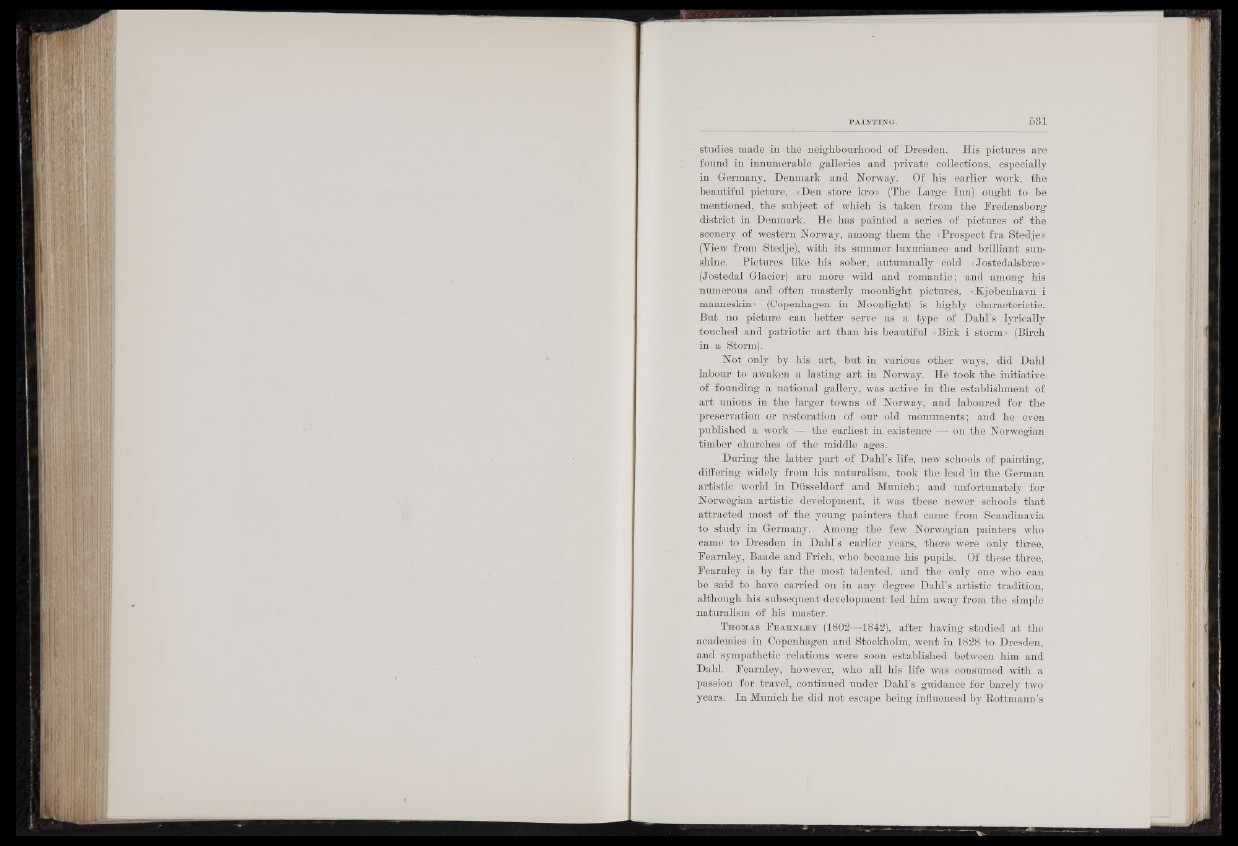
iVin
a a
PA IN T IN G .
studies made in the neighbourhood of Dresden. His pictures are
found in innumerable galleries and private collections, especially
in Germany, Denmark and Norway. Of his earlier work, the
beautiful picture, «Den store kro» (The Large Inn) ought to be
mentioned, the subject of which is taken from the Fredensborg
district in Denmark. He has painted a series of pictures of the
scenery of western Norway, among them the «Prospect fra Stedje»
(View from Stedje), with its summer luxuriance and brilliant sunshine.
Pictures like his sober, autumn ally cold «Jostedalsbrse»
(Jostedal Glacier) are more wild and romantic; and among his
numerous and often masterly moonlight pictures, «Kjabenhavn i
maaneskin» (Copenhagen in Mooplight) is highly characteristic.
But no picture can better server as a type of Dahl’s lyrically
touched and patriotic art than his beautiful «Birk i storm» (Birch
in a ,Storm).
Not only by his art, but in various other ways, did Dahl
labour to awaken a lasting art in Norway. He took the initiative
of founding a national gallery, was active in the establishment of
art unions in the larger towns of Norway, and laboured for the
preservation or restoration of our old monuments; and he even
published a work — the earliest in existence — on the Norwegian
timber churches of the middle ages.
During the latter part of Dahl’s life, new schools of painting,
differing widely from his naturalism, took the lead in the German
artistic world in Düsseldorf and Munich; and unfortunately for
Norwegian artistic development, it was these newer, schools that
attracted most of the young painters that came from Scandinavia
to study in Germany. Among the few Norwegian painters who
came to Dresden in Dahl’s earlier years, there were only three,
Pearnley, Baade and Prich, who became his pupils. Of these three,
Fearnley is by far the most talented, and the only one who can
be said to have carried on in any degree Dahl’s artistic tradition,
although his subsequent development led him away from the simple
naturalism of his master.
T h o m a s F e a e n l e y (1802—1842), after having studied at the
academies in Copenhagen and Stockholm, went in 1828 to Dresden,
and sympathetic relations were soon established between him and
Dahl. Fearnley, however, who all his life was consumed with a
passion for travel, continued under Dahl’s guidance for barely two
years. In Munich he did not escape being influenced by Rottmann’s